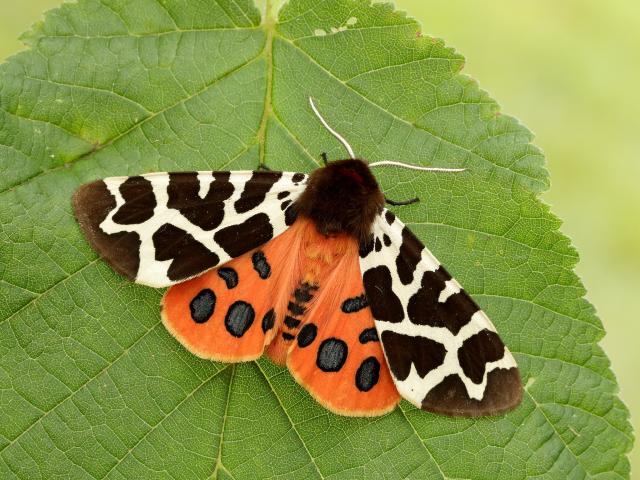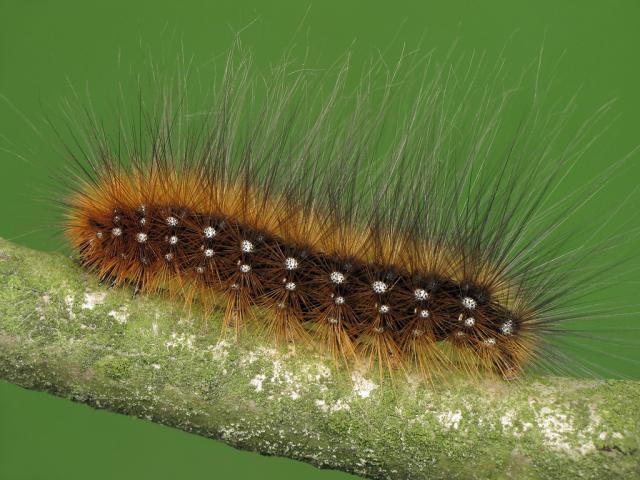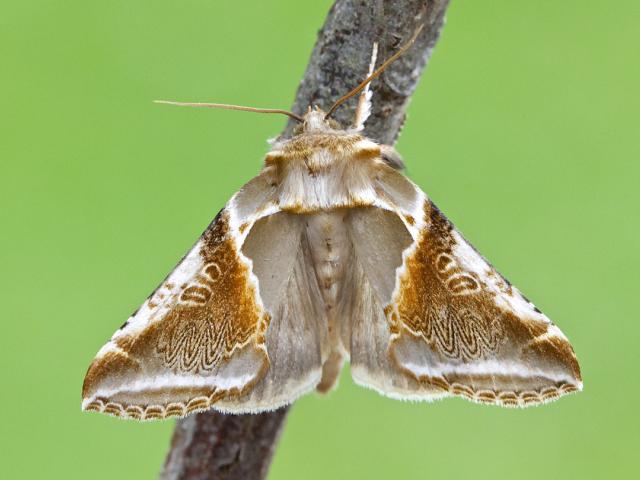Moths are declining in the UK. Studies have found the overall number of moths has decreased by 33% since 1968. The situation is particularly bad in southern Britain, where moth numbers are down by 39%. Many individual species have declined dramatically in recent decades and over 50 have become extinct here since the start of the 20th century.

Sadly, among the species which have declined are many beautiful moths which were previously very common and frequently seen in our gardens. These include the Garden Tiger and its familiar 'woolly bear' caterpillar (down 90% since 1968), the pink-striped Blood-vein (declined by 59%), the elegant White Ermine (decreased by 71%) and the V-moth (down by 98%)! Many other moths formerly common in a range of habitats, including farmland and woodland, have also shown similar large losses.
These alarming decreases in moth populations are not just bad news for the moths themselves, but also have worrying implications for the rest of our wildlife. Moths and their caterpillars are important food items for many other species, including amphibians, small mammals, bats and many bird species. Moth caterpillars are especially important for feeding young chicks, including those of most familiar garden birds such as the Blue Tit and Great Tit, Robin, Wren and Blackbird. A serious decline in moth numbers could have disastrous knock-on effects for all these wildlife species.

Already, research has indicated that a decrease in the abundance of bats over farmland is related to the decline in the moths that they depend on. Cuckoos may also have been affected. They specialise in eating hairy caterpillars, which most other birds avoid, and it has been suggested that the drop in our Cuckoo population may be linked to the decline in moth caterpillars like those of the Garden Tiger.
It is not clear what is causing the downward trend in our moth numbers, For instance some woodland species, like the Buff Arches and Peach Blossom have shown serious reductions in their numbers, despite an increase in the amount of woodland. The reasons for the loss of moths are likely to be many and complex, and may vary for different species. More research is needed to understand what is happening. However, the loss of habitats resulting from more intensive agriculture, commercial forestry, industry and urban development are likely to be major reasons.

Other things which may be causing problems for moths include changes in the way we manage our gardens, pesticides, herbicides and light pollution. Climate change is also affecting moths. Whatever the causes, the decrease in moth numbers is a warning to us that all is not well with our environment.
For more details about moth declines, you can read our report on the State of Britain's Larger Moths.

